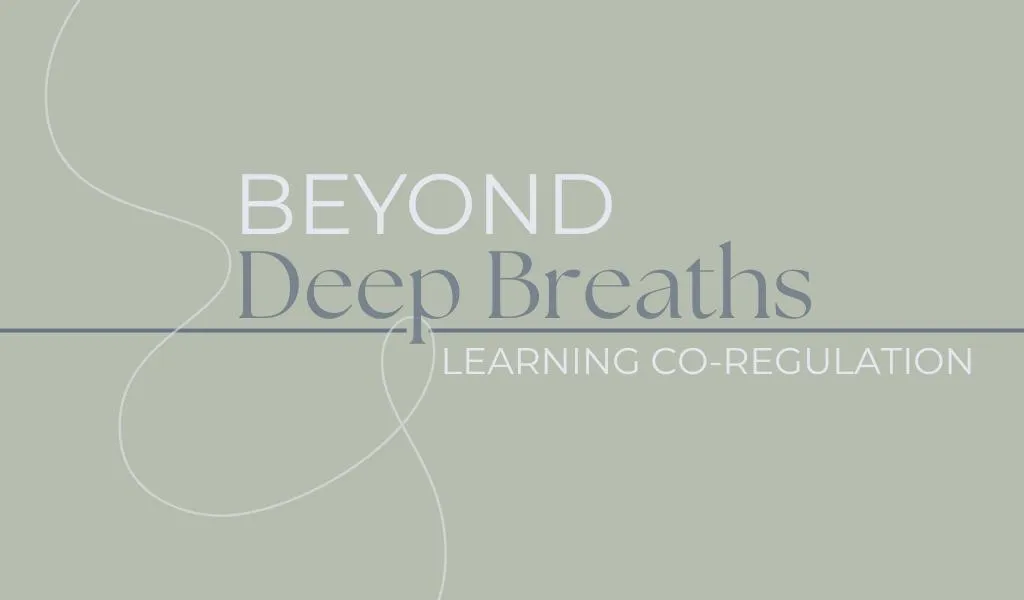
Beyond Deep Breaths : Learning Co-Regulation

Sometimes it takes more than a few deep breaths.
Sometimes you’re mid-meltdown—maybe your child’s, maybe your own.
You offer a deep breath, a stuffed animal, maybe a reminder to count to ten.
But nothing’s working.
Not for them.
And honestly? Not for you either.
It’s in these moments that many parents feel helpless or defeated.
We know we want to stay calm.
We try to help our kids calm down.
But if you're relying on random tools instead of understanding your nervous system, it's like throwing darts in the dark.
True regulation doesn’t start with what you say.
It starts with what you feel.
Your Nervous System Is the Place Where Calm Begins
Let's take a moment and look under the surface! According to Polyvagal Theory—a groundbreaking framework developed by Dr. Stephen Porges—our ability to stay calm, connected, and emotionally available depends on the state of our autonomic nervous system.
I know, I know! You may feel like, "what the heck does that mean?" And I will break it down a little here!
There are three primary states:
Ventral Vagal (Safe & Social): Where we feel grounded, open, playful, and connected. This is the zone of empathy, learning, and relationship.
Sympathetic (Fight or Flight): The stress zone. When you're yelling, rushing, panicking, or feeling the urge to run or lash out—you’re here.
Dorsal Vagal (Shutdown & Collapse): When you feel numb, checked out, helpless, or detached. This is the “I give up” zone.
Our goal isn't to never leave the calm zone.
It's to know how to find our way back—and teach our children how to do the same.
Want to Go Deeper?
In a post like this, we just can't seem to dive as deep as we want to go! That's why we offer so many tools within the C.A.L.M Parent Academy to dig into these areas and educate ourselves to become the parents we feel proud to be!
If you are craving more, click below and join thousands of like-minded parents in our community.
Regulation Tools Are Not One-Size-Fits-All
One child may need to jump on a trampoline.
Another may need to lay under a weighted blanket.
You might need fresh air and silence.
Your partner might need a tight hug.
The key is this: Regulation isn’t about controlling the behavior. It’s about meeting the body’s need.
Getting yourself (or your child) back into safety within your nervous system will depend on:
Sensory preferences
Past experiences
The state you're starting from
You can’t force a child to calm down with a strategy that doesn’t match the state they’re in.
And you can't offer co-regulation without first finding true calm within yourself.
You Simply Can’t Teach What You Haven’t Practiced
Many of us were never taught how to identify the state of our nervous system, let alone how to shift it.
We were told to “calm down,” “get over it,” or “go to your room.”
But here’s the good news: we're learning it now!
Your nervous system is trainable.
So is your child’s.
And when you model real regulation—when you show your child what it looks like to feel big feelings and recover with intention—you’re giving them something more valuable than any discipline strategy.
You’re giving them emotional safety that will serve generations after you.
We want you to know, we are so privileged to do this work with you! If you enjoyed this post and want to see more from us, sign-up for our email list below.
